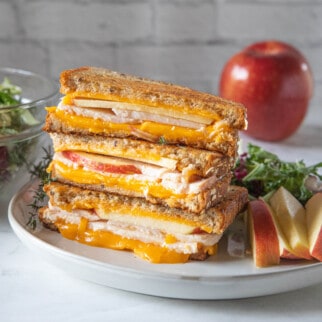5 Tips for Getting Kids Involved in the Kitchen
Getting kids involved in the kitchen not only helps create lifelong skills and lessons, but it will create family memories! Here are tips for getting kids involved in the kitchen from Diana Rice, RD.

We are very excited to share this guest blog post from our friends at The Kids Cook Monday.
Creating a meal together as a family means more than just tasty food on the table. Getting the entire family involved in preparing the main event will create memories that will last forever and maybe a new family tradition. Plus, extra hands are always a plus!
Having your children help you prepare family meals is one of the most effective ways to encourage them to try new foods and improve their overall diet quality, both now and later in life. But if you’re used to quickly whipping together a meal amidst your family’s usual weeknight chaos, the thought of corralling the kids into the kitchen can feel overwhelming.
To ease into the habit, try these simple tips for getting kids involved in the kitchen:
- Set a date: You don’t necessarily need to hold a cooking lesson each time you put together a meal. Designate a time once a week for family cooking. By planning in advance, you’ll be less frantic when the time comes and the kids will have a fun event to look forward to. Any day can work, but research shows that Monday is an especially great day for it!
- Set up a designated area: You’re rightfully wary of perching your child anywhere near a hot stove and your chef’s knives. Set up a “cooking station” in a safe area like the kitchen table with only the tools your child will need for the task at hand. Not only will this make for a less chaotic cooking experience, but it will also help your child focus on the task.
- Have the right tools: Certain cooking instruments, like knives and vegetable peelers, aren’t always appropriate for little hands. Consider investing in child-safe versions of such tools. Not only will these tools allow your child to practice essential cooking skills, but they’ll also help give your child a sense of ownership over the activity.
- Teach one skill at a time: Be careful not to overwhelm your child with too many tasks at once. For kids new to cooking, start with mixing, then in later weeks, move on to measuring, chopping, etc. Designate the skill of the day as your child’s “job” for the family meal and be sure to congratulate him or her on a job well done to boost their kitchen confidence!
- Be mindful of age-appropriate tasks: If you’re just starting to get your kids involved in the kitchen, it helps to now which tasks are suited for each age range:
- 2–3-year-olds: This group needs the most supervision, so give them simple tasks at times when you can keep a close eye on them. Start with tasks like washing produce, tearing herbs and lettuce or shaking salad dressing in a jar.
- 4–5-year-olds: At this age, kids can practice chopping soft fruits and vegetables with a plastic knife, mixing and measuring. They can also juice limes and lemons, set the table and measure dry ingredients.
- 6–7-year-olds: By this age, kids have the fine motor skills to practice tasks like grating, peeling, chopping semi-hard vegetables and shaping dough. Let them read the recipe, grease and line baking pans, crack eggs and pour ingredients.
- 8-year-olds and up: Kids in this range can likely practice using a can opener and chopping firm vegetables. Use your discretion; depending on their maturity, they may also be able to add items to a hot pan on the stove and take dishes out of the oven using pot holders. With the right supervision and guidance, this age group can conquer many of the kitchen tasks we complete as adults.
For a more detailed list of kitchen tasks for different age ranges, visit TheKidsCookMonday.org. Happy cooking!
By Diana K. Rice, RD
The Kids Cook Monday staff dietitian















Set up a “cooking station” in a safe area like the kitchen table with only the tools your child will need for the task at hand <— I totally need one of these! I wonder if they make little kiddie tables that are also cookable, you know what I mean?